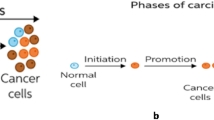Abstract
One of the biggest difficulties facing medicine today is cancer. Lung cancer along with colon cancer, stomach cancer and liver cancer, are the four most dangerous cancers. If the disease is detected early and treated properly, it can prolong the patient’s life. Today, many tasks in many fields, including medicine, can be resolved by using deep learning techniques. This paper proposes to modify the Deep Neural Network transfer learning for the lung and colon cancer classification based on GoogLeNet. Specifically, the main idea of the inception module of GoogLeNet that is running multiple operations (pooling, convolution) with multiple filter sizes in parallel so that we do not have to face any trade-off. The second advantage of the inception module is dimensionality reduction of feature maps and over parameterization dealing. The output of classification was adjusted to 3 or 2 classes due to the required classes of lung and colon problems. The accuracy of the proposed method is 99.66% and 100% in the lung and colon image dataset, respectively. The results of the proposed method are better than the other methods such as VGG16, Resnet50, NASNetMobile and original GoogLeNet.
Access this chapter
Tax calculation will be finalised at checkout
Purchases are for personal use only
Similar content being viewed by others
References
World Health Organization (WHO). https://www.who.int/news-room/fact-sheets/detail/cancer. Accessed 15 May 2022
Chen, C.-L., et al.: An annotation-free whole-slide training approach to pathological classification of lung cancer types using deep learning Nat. Commun., 1–13 (2021). https://doi.org/10.1038/s41467-021-21467-y
Canziani, A., Paszke, A., Culurciello, E.: An analysis of deep neural network models for practical applications, pp. 1–7 (2017). https://arxiv.org/pdf/1605.07678.pdf. Accessed 15 May 2022
Asuntha, A., Srinivasan, A.: Deep learning for lung Cancer detection and classification. Multimedia Tools Appl. 79, 7731–7762 (2020). https://doi.org/10.1007/s11042-019-08394-3
Liu, Z., Yao, C., Yu, H., Wu, T.: Deep reinforcement learning with its application for lung cancer detection in medical internet of things. Future Gener. Comput. Syst. 97, 1–9 (2019). https://doi.org/10.1016/j.future.2019.02.068
Chaturvedi, P., Jhamb, A., Vanani, M., Nemade, V.: Prediction and classification of lung cancer using machine learning techniques. IOP Conf. Ser. Mater. Sci. Eng., 1–19 (2020). https://doi.org/10.1088/1757-899X/1099/1/012059
Ramanjaneyulu, K., Hemanth Kumar, K., Snehith, K., Jyothirmai, G., Venkata Krishna, K.: Detection and classification of lung cancer using VGG-16. In: 2022 International Conference on Electronic Systems and Intelligent Computing, pp. 69–72 (2022). https://doi.org/10.1109/ICESIC53714.2022.9783556
Thanzeem Mohamed Sheriff, S., Venkat Kumar, J., Vigneshwaran, S., Jones, A., Anand, J.: Lung cancer detection using VGG NET 16 architecture. In: International Conference on Physics and Energy, pp. 1–8 (2021). https://doi.org/10.1088/1742-6596/2040/1/012001
Lu, Y., Liang, H., Shi, S., Fu, X.: Lung cancer detection using a dilated CNN with VGG16. In: 4th International Conference on Signal Processing and Machine Learning, pp. 45–51, (2021). https://doi.org/10.1145/3483207.3483215
Wei, J.W., Tafe, L.J., Linnik, Y.A., Vaickus, L.J., Tomita, N., Hassanpour, S.: Pathologist-level classification of histologic patterns on resected lung adenocarcinoma slides with deep neural networks, Sci. Rep., 1–8 (2019). https://doi.org/10.1038/s41598-019-40041-7
Szandała, T.: Review and comparison of commonly used activation functions for deep neural networks. In: Bhoi, A.K., Mallick, P.K., Liu, C.-M., Balas, V.E. (eds.) Bio-inspired Neurocomputing. SCI, vol. 903, pp. 203–224. Springer, Singapore (2021). https://doi.org/10.1007/978-981-15-5495-7_11
Luo, J., et al.: Improving the performance of multisubject motor imagery-based BCIs using twin cascaded Softmax CNNs. J. Neural Eng. 18(3) (2021). https://doi.org/10.1088/1741-2552/abe357
LC25000 Lung and colon histopathological image dataset. https://www.kaggle.com/datasets/andrewmvd/lung-and-colon-cancer-histopathological-images. Accessed 15 May 2022
Garg, S., Garg, S.: Prediction of lung and colon cancer through analysis of histopathological images by utilizing Pre-trained CNN models with visualization of class activation and saliency maps. In: 3rd Artificial Intelligence and Cloud Computing Conference, pp. 38–45 (2020). https://doi.org/10.1145/3442536.3442543
Ali, M., Ali, R.: Multi-input dual-stream capsule network for improved lung and colon cancer classification. Diagnostics (8), 1–18 (2021). https://doi.org/10.3390/diagnostics11081485
Chehade, A.H., Abdallah, N., Marion, J.-M., Oueidat, M., Chauvet, P.: Lung and colon cancer classification using medical imaging: a feature engineering approach. Phys. Eng. Sci. Med., 1–25 (2022). https://doi.org/10.1007/s13246-022-01139-x
Bukhari, S.U.K., Asmara, S., Bokhari, S.K.A., Hussain, S.S., Armaghan, S.U., Shah, S.S.H.: The histological diagnosis of colonic adenocarcinoma by applying partial self supervised learning. medRxiv (2020)
Acknowledgement
We acknowledge the support of time and facilities from Ho Chi Minh City University of Technology (HCMUT), VNU-HCM and Ho Chi Minh city University of Education for this study.
Author information
Authors and Affiliations
Corresponding author
Editor information
Editors and Affiliations
Rights and permissions
Copyright information
© 2022 The Author(s), under exclusive license to Springer Nature Singapore Pte Ltd.
About this paper
Cite this paper
Hoang, T.H., Binh, N.T., Van, V., Tan, N.Q. (2022). Lung and Colon Tumor Classification Based on Transfer Learning-Based Techniques. In: Dang, T.K., Küng, J., Chung, T.M. (eds) Future Data and Security Engineering. Big Data, Security and Privacy, Smart City and Industry 4.0 Applications. FDSE 2022. Communications in Computer and Information Science, vol 1688. Springer, Singapore. https://doi.org/10.1007/978-981-19-8069-5_42
Download citation
DOI: https://doi.org/10.1007/978-981-19-8069-5_42
Published:
Publisher Name: Springer, Singapore
Print ISBN: 978-981-19-8068-8
Online ISBN: 978-981-19-8069-5
eBook Packages: Computer ScienceComputer Science (R0)




